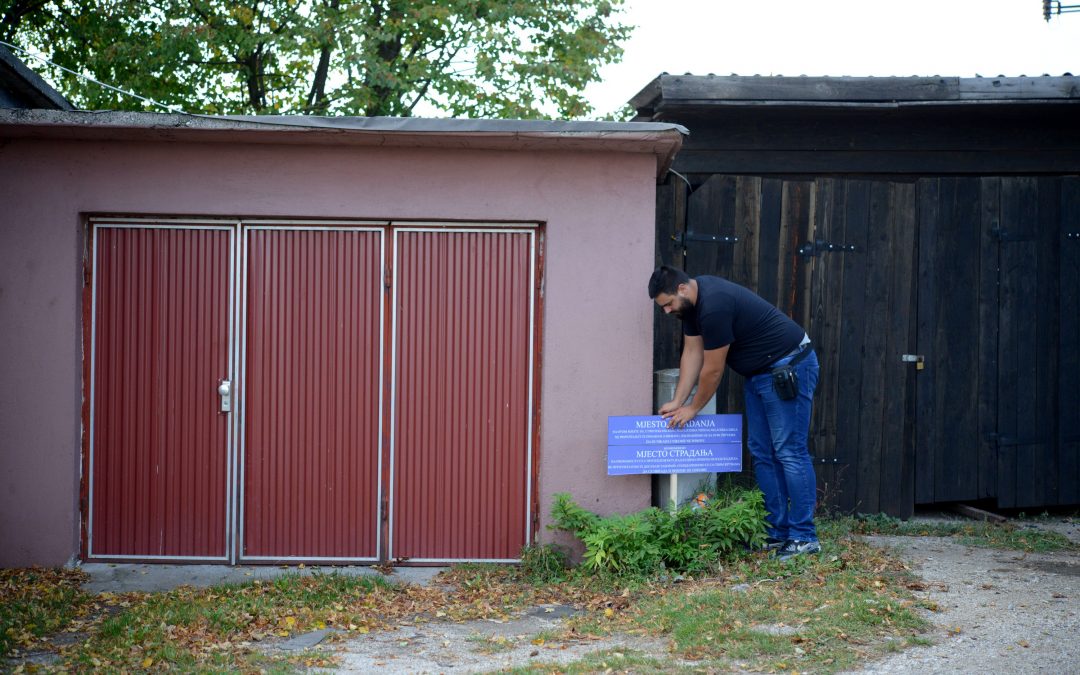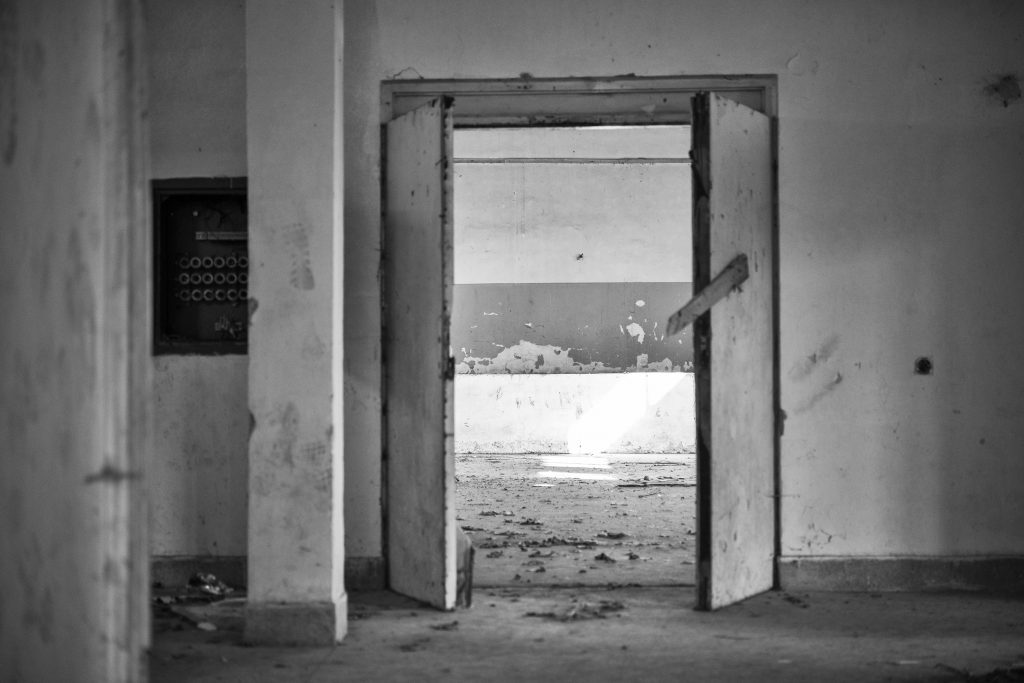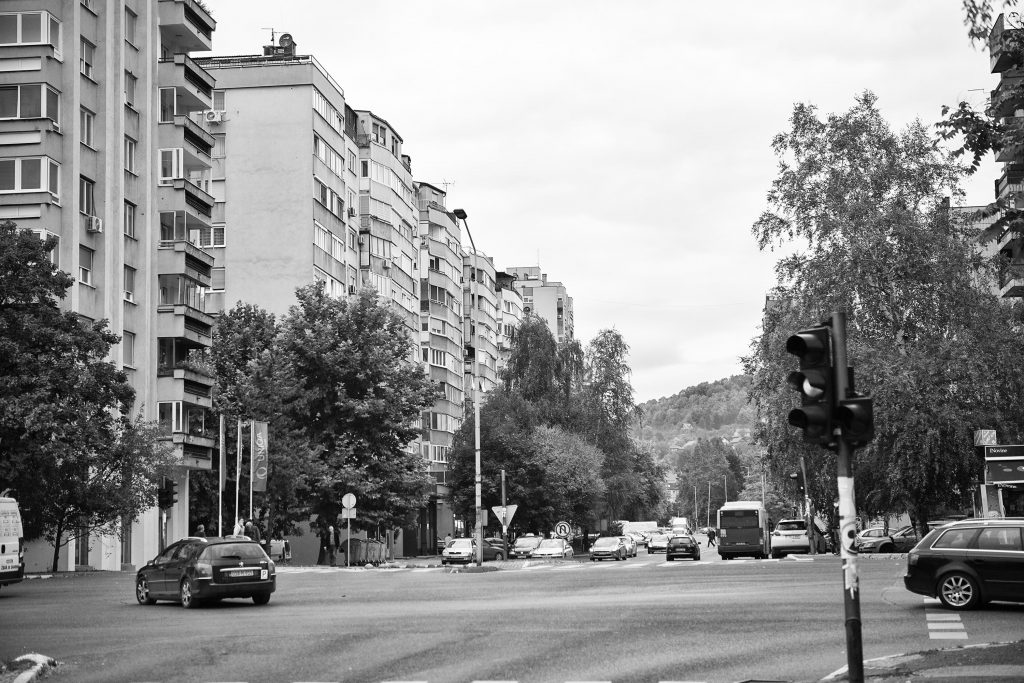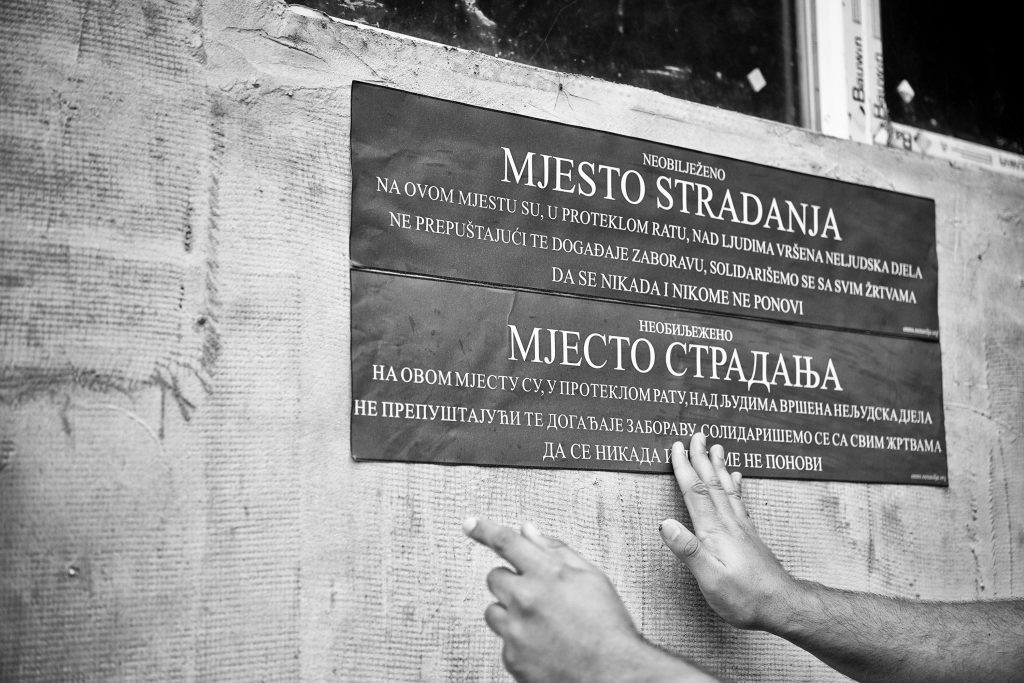Our 12th action of marking unmarked sites of suffering is complete. Five years ago, it was autumn much like now, when we started our mission and we had a vague idea of what to expect, but we were not aware of how hard it would be and how many unmarked sites of suffering there were. As time passed, I have come to realise that it has not gotten easier, and we are nowhere near the end. That October back in 2015, the first sites of suffering we marked were in Podrinje; we have returned to the area a few times since, and once again this time.
Crni vrh
Zvornik has two difficult stories, the one from 1992 and the one from Srebrenica in 1995. Chronologically, the one from 1992 comes first, when the Bosnian pot started boiling over and the Bosniaks of Zvornik were captured, abused and killed in many locations throughout the territory of the city. A special role in the system of disappearing these unwanted people was played by what used to be public facilities: schools, stadiums, sports centres, and especially cultural centres. One of these cultural centres was in Drinjača, upstream from Zvornik. Currently, the building is in ruins, with an impressive cinema hall whose stage makes your blood run cold as it evokes the scenes that took place there in the time when the building served as a site of detention. More than 80 prisoners were executed at this site in the night between 30 and 31 May 1992.
Čelopek, downstream along the Drina, also used to have a cultural centre. It was destroyed after the war and replaced by buildings housing a café, a pharmacy and a clinic. In the summer of 1992, the cultural centre that would later be demolished was the site of detention for 162 Bosniaks from the village of Divič, and at least 27 of them were also killed there. We marked this site by placing the sign right next to the building on the road, because a new building has replaced the old one
Perhaps that is the only fate befitting bloodied cultural centres, their demise and disappearance, since culture had long since been killed in them during the war.
We took a winding road up to the village of Snagovo and the toponym Rašidov han, where 36 people were killed in 1992 in a private garage and their bodies then burnt. Hearing from the locals about the casket with 36 compartments in which the carbonised remains of the victims were buried, and stories about the rivulets of blood that flowed down from the nearby hill of Crni vrh in the summer of 1995 when a larger group of captives were killed there after the fall of Srebrenica, in my mind I was taken back our first visit to Zvornik, when we marked the Cultural Centre in Pilica, where in the summer of 1995 more than 500 people, captured after the fall of Srebrenica as they were trying to break through to the area under ARBiH control, were killed.
We took a winding road up to the village of Snagovo and the toponym Rašidov han, where 36 people were killed in 1992 in a private garage and their bodies then burnt. Hearing from the locals about the casket with 36 compartments in which the carbonised remains of the victims were buried, and stories about the rivulets of blood that flowed down from the nearby hill of Crni vrh in the summer of 1995 when a larger group of captives were killed there after the fall of Srebrenica, in my mind I was taken back our first visit to Zvornik, when we marked the Cultural Centre in Pilica, where in the summer of 1995 more than 500 people, captured after the fall of Srebrenica as they were trying to break through to the area under ARBiH control, were killed.
Best Kept Quiet
After marking the sites in Zvornik, we continued our action in Tuzla. Brčanska malta is a residential district in Tuzla, but its name has become known because of events from 15 May 1992 when the main intersection was the site of a clash between the Territorial Defence of BiH and a convoy of the retreating Yugoslav National Army. The video footage of the column leaving the Husinska buna barracks and going into flames was recorded by reporter Sinan Alić, who joined us this time to mark the unmarked sites of suffering. We met Sinan for the first time during our previous action when he took part in our marking of the Tuzla Convoy of Salvation in Novi Travnik, where he expressed his readiness to provide his support and company in Tuzla and other locations within this action to mark sites.
According to the RS Centre for Investigation of War Crimes, 54 JNA soldiers were killed and 44 were wounded during the clash at Brčanska malta. On the other hand, according to the Truth, Justice, Reconciliation Foundation from Tuzla, 33 JNA soldiers from the column and three members of the Tuzla police forces were killed. Although the nature of the events at Brčanska malta is still disputed – whether it was a crime, and attack on a legitimate target, an act of defence, an incident, however you want to call it, the fact is that dozens of people were killed at the site and memory of them and of Brčanska malta is still taboo and seen as something best kept quiet.
In rainy Srebrenik, we marked two sites in the village of Rapatnici close to the town. The building of the Youth Club and auxiliary buildings at the local stadium were used in the summer of 1992 as a site of detention for Serbs from the area of Srebrenik. The prisoners were subjected to humiliation and abuse, and after being held in Rapatnica, they were transferred to the prison in Tuzla. When marking the Youth Club, we went to a small local shop right next door and spoke to locals who told us openly about the makeshift prison in the basement and shared their perspective of these past events.
With this site, we reached 90 unmarked sites of suffering that we documented and visited.
Minority Culture of Memory
On our way back to Sarajevo, looking out at Mount Konjuh painted in the colours of autumn, letting the pieces of this action sink in, I was suddenly reminded of a line from the song “Konjuh Mountain”, “The leaves sing mournful songs.” Engaging with the culture of memory over these past five years, looking at who mourns which victims and how, and where mourning is permitted and where it isn’t, going into small communities where the minority culture of memory is unwelcome, listening to dozens of testimonies from victims and their loved ones, surveying sites where rivers of blood used to run, but that have now resumed their sad little quotidian functions, I thought how every autumn nature unmistakably mourns over all the pain we left behind.
The activity continues on social networks.
Media reports:




